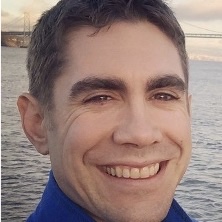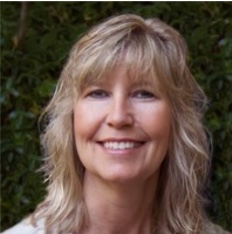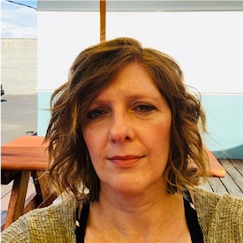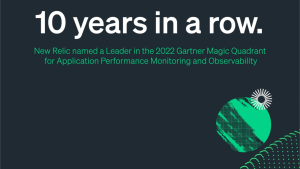With a global pandemic preventing most information workers from in-office, face-to-face collaboration and water cooler chatter, feelings of loneliness and isolation can haunt even the most introverted worker. But it can be especially lonely for those in managerial roles—the adage "it's lonely at the top" takes on a more, well, complex meaning. I had heard that New Relic's engineering managers have a special approach to addressing this—something called "Mini-M" groups. So as part of our Life at New Relic series, I spoke to three engineering managers about these groups. The concept of Mini-Ms—which stands for “mini-management”—is one that developers and engineering teams can leverage, of course, but they're also a great idea for any function within a large organization that wants to support the success of managers and their teams.
I'll start by introducing you to the three software engineering managers I spoke with:
-

Marty Matheny Marty Matheny is a Senior Manager overseeing a seven-member database team, e.g., part of the Telemetry Data Platform (TDP) team that powers New Relic One. He started with New Relic in 2015. His team of DevOps engineers write code to ensure the reliability of New Relic's systems and ensure the automation and repeatability of the databases that make up TDP. "We're database experts, but there are also 2,000 running databases at New Relic that need to be up. So we automate the process of creating databases and providing tools for teams using them," Marty explains.
- Desiree Barrett is a Director whose nine-member team oversees the container orchestration platform that New Relic runs on. Our product teams, and the applications customers use, run on the platform that her team builds and supports. Currently moving in a Kubernetes direction, her team used to be part of a group called Site Engineering,

Desiree Barrett but because TDP is so closely aligned and so reliant with cloud infrastructure, Site Engineering merged with the TDP team. "You might say we are an infrastructure team, with a heavy development focus. We've moved in the three years that I've been with New Relic from operations to a development team because of the scale. We're running over a thousand servers in our data centers and more in AWS, so it can't be a manual production. We spend a lot of time streamlining, smoothing out, and making sure things are always running," Desiree says.
- Kara Taylor is a Manager for two teams in the Applied Intelligence (AI) operations group at New Relic, probably best known for the recent release of the Proactive Detection capability. Her two teams—called Radar and the Applied Intelligence group—consist of eight engineers who partnered to launch the feature. The Radar team is more customer-facing and features a mix of backend and frontend engineers. They build the customer interface, configurations, and different functions customers use to set up

Kara Taylor Proactive Detection. They are complemented by her AI team, which focuses heavily on backend engineering and works with a blend of applied statistics, data science, and machine learning techniques. "They created the models for the different golden signals that power Proactive Detection, and so on. I think every New Relic engineer needs to have some of that DevOps reliability focus, especially because they're owning services they built from end to end. But I would say my teams are maybe a little bit different than Marty and Desiree's in the sense that they're building different customer-facing features. So they're a bit more of a traditional engineering team," Kara says, adding that she currently has an opening and hopes to increase her teams to nine members soon.
Charlotte: How do you describe Mini-M groups to a manager joining New Relic?
Marty: When I'm out networking with other people, sometimes trying to recruit managers to join New Relic, I often tell them that one of the processes I think is one of the best for managers is this Mini-M process. And New Relic has all of our processes written down so we can see all of them dedicated to the engineering work.
The Mini-M process helps with onboarding new managers because you're put into a group with seven or eight managers that meet roughly weekly or every other week. And you get to ask them questions like, “Hey, I'm a part of this new, large engineering organization. How do things work?” It also helps with standardization when managers ask questions like, “I'm new—how do I do reviews? I know how I did reviews at my last company. How do you do them here? What's the process? What resources, what links can you share with me to understand how to do my job day to day?” We build sort of a self-help group for managers. It can be a place where you vent. If you're going through something difficult with your team or your org, you have people to talk to who will listen and offer their perspective. It can feel like group therapy sometimes, which I find really helpful.
Charlotte: So you're venting to other managers?
Desiree: Yes, right. I would say there's an understanding, kind of like Las Vegas: What's said in the Mini-M, stays in the Mini-M. We have to have that level of trust with our counterparts to vent or share things that we wouldn't want discussed.
Kara: I've been at New Relic for two years now. And Mini-Ms were one of the things that stood out and motivated me to apply. The person who referred me talked about Mini-Ms and how important they were. We had both come from a previous company where you were thrown into management. Here you go—here's one class you can take—and good luck! I found that I was learning a lot on my own and really wanted a place where I could onboard better, understand what resources we had as managers, what trainings, what expectations, just a good group of people that can help you navigate that. And you don't feel alone when you start someplace; you already have that support system. So that was huge for me.
Charlotte: Are Mini-M group conversations facilitated or led by anyone, or is it simply a get-together of managers with self-directed conversations?
Desiree: Yes, all three of us are facilitators for our groups, but it looks different for each group, and we're not driving the conversation. So in terms of how I work with my group, we start with a quick go-around the room, and I ask everyone to share:
- Something personal from this week
- Something in their professional life for this week
- Any topics they may want to discuss
What that does is build a personal connection, and we share people's drama of remodeling their house, or as we've been going through COVID, the struggles people are having with their kids, teaching their kids at home. It's not just all about work. I try at least with my group to have a little personal touch from everyone every week and then talk a little bit about what's going on at work. That's how we do ours, and people come up with topics, and we choose. Is there a topic that we want to focus on, or if we have time in the hour-long meeting, multiple topics.
I also have been a manager in several other companies, where you generally work with managers close to your department or your group. In our Mini-Ms, we intentionally have a cross-section of people from different functions of the engineering organization. We don't even put two managers who report to the same director in the same Mini-M. It gives us a window and a good perspective into all the different types of engineers and different engineering functions at New Relic—not just the people we always work with. That provides a good balance that's hard to get otherwise, and the camaraderie you gain with people you wouldn't normally cross paths with is often helpful.
Marty: We have a free-form agenda that people can add things to before the meeting. It's an optional weekly meeting with its own Slack channel to discuss, as a followup, a topic we were addressing or sharing some links or, for instance, more information on the process I use for team off-sites. It's not just about running the Mini-M meetings. It's a process that is shared across the org because there's a lot of variation.
Charlotte: And so Desiree, are you a leader in one group and a participant in another Mini-M group?
Desiree: I'm the facilitator of the Mini-M group that I'm part of—that's generally how we do it. We don't lead and participate. But I don't direct things. The team, as a whole, decides what to discuss. I just set up the pattern for how we start in the warm-up.
Charlotte: And for how long do you remain as a Mini-M group leader? Is there a defined length of time that you facilitate and then hand it off to someone else?
Marty: People tend to stay facilitators, though some people move into director roles. We have one group that's all directors. They may not have time to facilitate anymore, so they’ll join this other director group as a participant.
Desiree: Yeah, I would say people's schedules fluctuate, and they can end up having a conflict. So they have to go to a different group, and they might not facilitate that group. Things do move around and change.
Kara: I just became the facilitator of my group, not that long ago. And a majority of the people in my group (at the time) were working on the big New Relic One relaunch. So we've had to pause our Mini-M. We took a two-week hiatus, and we're joining back next week. So I'm learning the facilitation ropes. I like what Desiree does. Ours is very similar in that we sit down, we talk about what topic we want to discuss today.
Usually, there's been an all-hands or something going on that we want to talk about, or maybe it's review time. Somebody might be having a difficult conversation. We support each other, participate, and offer tips and ways we've handled them. It's pretty easy going.
Charlotte: How many people are in each Mini-M group?
Marty: We've got eight Mini-M groups with between six to 10 members in each group and one group of directors.
Charlotte: Have any of you experienced something similar at any other company?
Desiree: No. I think it is unique to New Relic and valuable.
Marty: I think Mini-Ms require a certain scale of teams, because if you have just three teams in the company, which many do—especially startups and midsize organizations—you're meeting with those other teams’ managers anyway in your staff meeting. One director and three managers. I think New Relic started this when the engineering org grew to about seven to 10 teams—they formed two Mini-M groups, mixed it up, and now it's spread to 80 teams and nine Mini-M groups. It makes a lot of sense at a company our size, now that the product engineering org has 700 to 800 people.
Desiree: We should also mention that our Barcelona managers and those in other (international) locations also attend. Sometimes it's more of a challenge because there is a small window of overlap for these to be scheduled. But we do have a few Mini-Ms with Barcelona managers included, and obviously, their style and some of the things they handle are quite different from ours in the US.
Still, one thing you learn from Mini-Ms is there are so many similarities. You might think that your challenges are unique because this is site engineering—only to find out a different flavor of the same challenge exists everywhere. The Mini-M exposes that and helps you understand we have a shared experience, but at the same time, we are different and contribute to each other's success.
Charlotte: What would you say is the main goal of Mini-Ms?
Desiree: Supporting the managers. We have onboarding programs and an onboarding buddy when we bring in new managers. We have all the traditional training for managers, more so than many companies do, but this truly supports them more at an emotional level. Mini-Ms offer a place where you can ask the stupid questions that you're afraid to ask in other forums. So I would frame it that way.
Kara: I was going to say something similar. From my perspective, it's definitely support for managers and a way for us to have that voice and talk about career issues—like, how did you become senior? What are some things you're doing? We can talk about ways to support our engineers, but mainly to support each other. When you think about it, there are a lot of different things we're asked to do as managers of teams to support our engineers. But we need that space to keep us going and keep us strong. I think that's the way I look at it with my Mini-M—it's been huge in that way, giving me an hour to vent or share and be supported.
Marty: They say management can be a lonely job. You can't always share all your thoughts with your team, and it can feel uncomfortable to share all your thoughts with your manager. Mini-Ms help it feel not so lonely. I'm meeting with a group of people who are not my boss, so I don't have to worry about saying what I think. I'm worried about the decisions I've made for this project. I'm worried about XYZ, what do you all think? And you get that ability to talk to people about your problems in a way that's so helpful in understanding and solving them.
Charlotte: What have these groups meant to the three of you? Could you extrapolate the value they've brought to your lives and careers?
Marty: I would underscore the point Desiree and Kara made about being put into these groups with teams that are not like your team—you don't usually get that opportunity. Software infrastructure has all these layers. As someone on a database team at the bottom of the architecture layer, I get to hear about what's going on in these JavaScript engineering teams or on the microservices teams. It's educational for me to learn not just what they're working on, but also how they manage those teams differently to support their goals. I've used the metaphor of the blind man and the elephant when it comes to big projects like the New Relic One relaunch. I know what it looks like from a database perspective, but I've also heard about it from the JavaScript or the accounting systems perspective. You empathize with those teams more, and it helps you understand how we're all challenged in different ways as teams to support New Relic’s goals.
Kara: I would echo that. I would say it gives me a lot more context on what other teams are doing. I learn a lot. I think it's also made me a better leader. I mean, I hope it has, but I think I've taken away some different nuggets and some different things from other people in my group that have helped me lead my teams in a different way or with a different perspective on something. So that's been huge for me.
Desiree: Yes, you do become exposed to other ways of looking at things. And also just the wisdom of dealing with different situations. One thing I think is very important is messaging. Someone mentioned all-hands meetings. We have a lot of those because our company is a software company with enormous change going on all the time. Talking about the message we got from our leaders at the all-hands and cascading the message collectively is very valuable in a communication sense, too.
Are you interested in becoming an engineering manager at New Relic and benefiting from Mini-M groups? Explore our careers!
The views expressed on this blog are those of the author and do not necessarily reflect the views of New Relic. Any solutions offered by the author are environment-specific and not part of the commercial solutions or support offered by New Relic. Please join us exclusively at the Explorers Hub (discuss.newrelic.com) for questions and support related to this blog post. This blog may contain links to content on third-party sites. By providing such links, New Relic does not adopt, guarantee, approve or endorse the information, views or products available on such sites.



